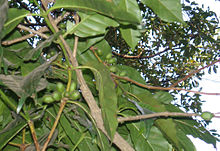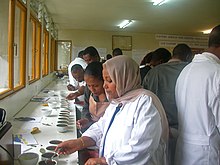Christianity was adopted in
Ethiopia as early as the 1st century. It has been said that Ethiopia
was one of the first nations in the whole world to accept Christianity. We can
find this introduction of Christianity in Ethiopia through the New testament book
of Acts. Act 8:26-40 discusses how a man named Philip helping a man understand
a passage of Scripture. 36 As they traveled along the road, they came
to some water and the eunuch said, “Look, here is water. What can stand in the
way of my being baptized?” [37] [c] 38 And he gave orders to stop the chariot.
Then both Philip and the eunuch went down into the water and Philip baptized
him. 39 When they came up out of the water, the Spirit
of the Lord suddenly took Philip away, and the eunuch did not see him again, but
went on his way rejoicing. 40 Philip, however, appeared at Azotus and
traveled about, preaching the gospel in all the towns until he reached Caesarea.
The Syriac Nine Saints and
Sadqan were two missionary groups that spread the religion of Christianity. The
Syriac missionaries helped in expanding the church. And also served as a center
where people could come and learn about the Christian faith. The bible was then
began being translating into different languages. It is said that the
translation of the bible into various languages played a vital part in the
spread of Christianity.
Also the story of Queen of
Sheba and Solomon was one of the first accounts of the spread of Christianity.
When the Queen of Sheba traveled to Jerusalem to see Solomon. He taught her
about the one true God and answered any biblical questions she had. He may have
been her lover but also her teacher. When she went back to Ethiopia and told
the good news of the one real, true God.






